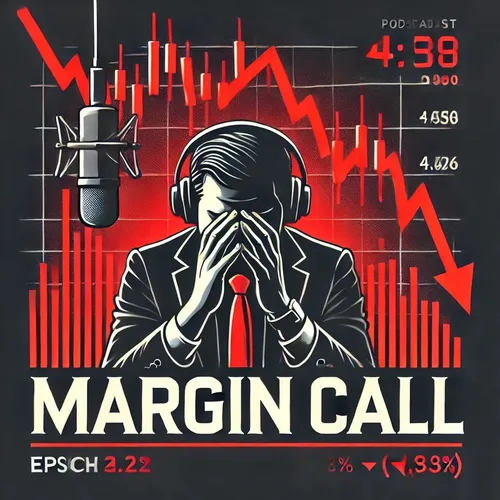Margin Calls and Short Positions: The High-Risk Drama of Financial Markets
- Author
- Quiet. Please
- Published
- Thu 24 Jul 2025
- Episode Link
- https://www.spreaker.com/episode/margin-calls-and-short-positions-the-high-risk-drama-of-financial-markets--67098257
Margin calls and short positions are critical themes within the mechanics and drama of financial markets. When a trader wants to amplify their potential returns, they may borrow money or securities from their broker through margin trading. This leverage allows traders to take larger positions than their actual cash would allow, opening the door for potentially amplified gains but also exposing them to greater risk. As margin debt surges, as FINRA data recently showed with a record high over $1 trillion in June 2025, market sentiment can grow exuberant, but this also increases vulnerability to rapid reversals.
A margin call occurs when the value of an investor’s account falls below the broker’s minimum requirement. For those using margin to maintain a position—whether they are betting on rising prices (going long) or falling prices (going short)—this can trigger urgent requests for additional collateral. If additional funds are not supplied promptly, brokers have broad authority to liquidate the position to recover their loan, often at the worst possible moment for the investor. This is particularly perilous during sharp market declines, where price drops can be swift, and opportunities to manage losses evaporate quickly.
Short positions are where traders seek to profit from falling prices. Here, they borrow a security and sell it, hoping to buy it back at a lower price and keep the difference. If the price drops as hoped, the short-seller gains. But if the price rises, losses can be theoretically unlimited, since there is no cap on how high a stock can soar. This dynamic creates the backdrop for so-called “short squeezes,” when rising prices force short-sellers to buy back shares at any price to close their positions, often driving prices even higher in a self-feeding spiral.
When short positions come under pressure, it’s sometimes described as shorts being “in trouble.” This situation can develop suddenly, such as when surprise earnings, a change in market sentiment, or coordinated trading activity cause the price of a heavily shorted stock to spike. As the value of the shorted shares rises, the margin requirement for the short increases as well. The broker may issue a margin call, and if the call isn’t met quickly—by adding cash or buying back the shares—positions are forcibly closed, locking in losses.
Episodes like these have shaped market history. During the tech bubble of 2000 or more recently with heavily shorted stocks like GameStop, aggressive buying led to sudden and severe short squeezes. In these moments, social dynamics and structural factors converge: high leverage, large outstanding short positions, and viral investor enthusiasm can produce parabolic price movements, leaving those short “in trouble,” with little room to maneuver.
While margin and short selling are powerful tools for seasoned investors, they carry substantial risks. Leverage magnifies both gains and losses, and in volatile markets, conditions can change rapidly enough that even professionals are caught off guard by margin calls and forced liquidations. For traders considering these strategies or intrigued by headline-grabbing short squeezes, it’s essential to understand that while the rewards can be substantial, the consequences of being on the wrong side can be severe. High levels of margin debt and large short positions often signal not just opportunity, but also mounting risk, especially as markets approach points of instability.
Thanks for tuning in, and don’t forget to subscribe. This has been a Quiet Please production, for more check out quietplease dot ai.
For more http://www.quietplease.ai
Get the best deals https://amzn.to/3ODvOta
